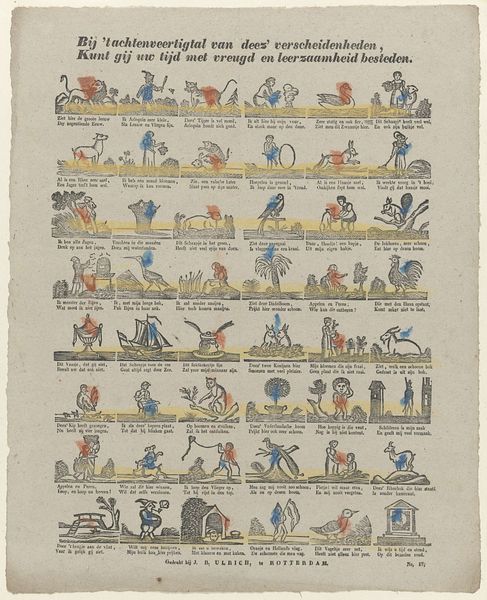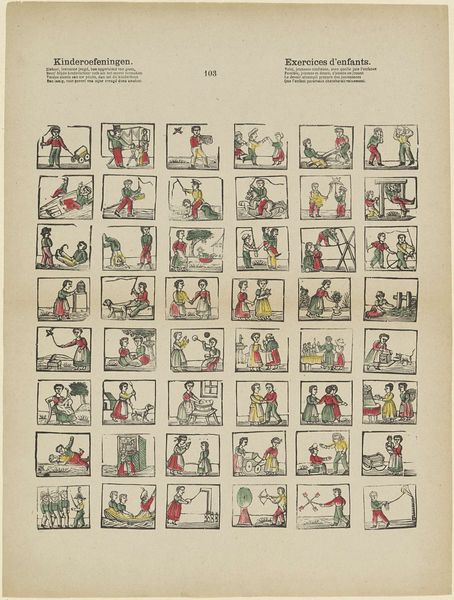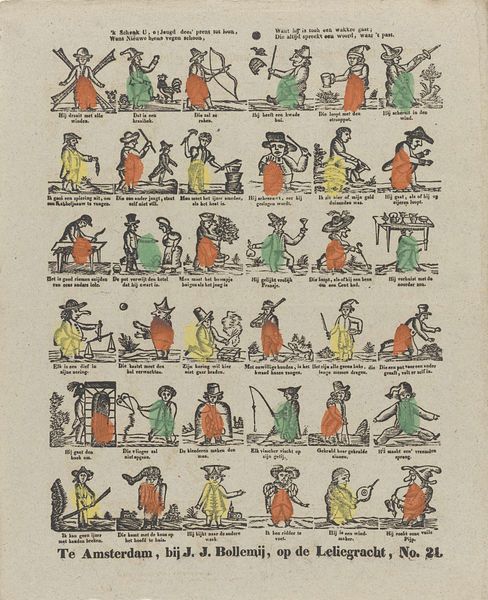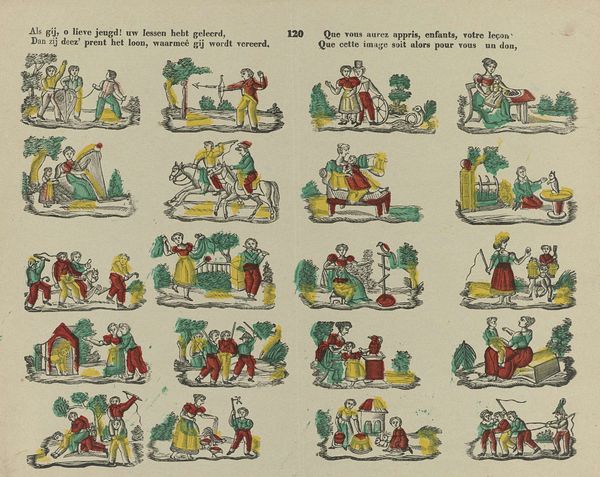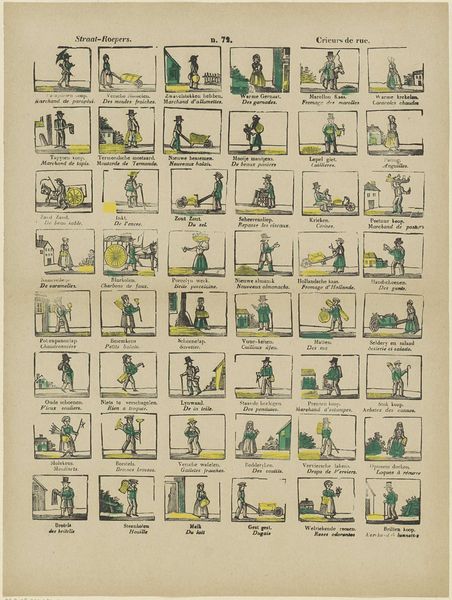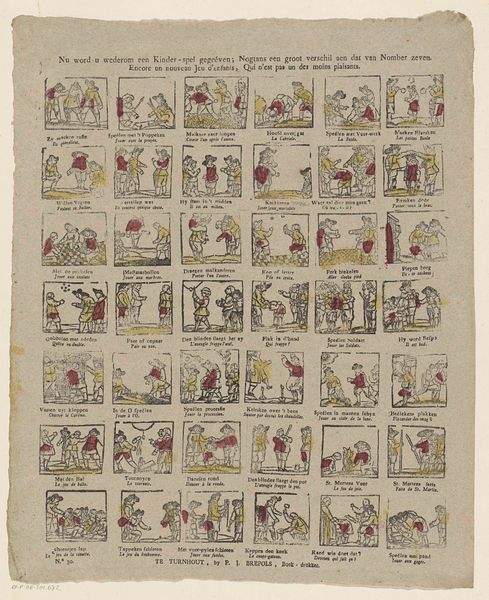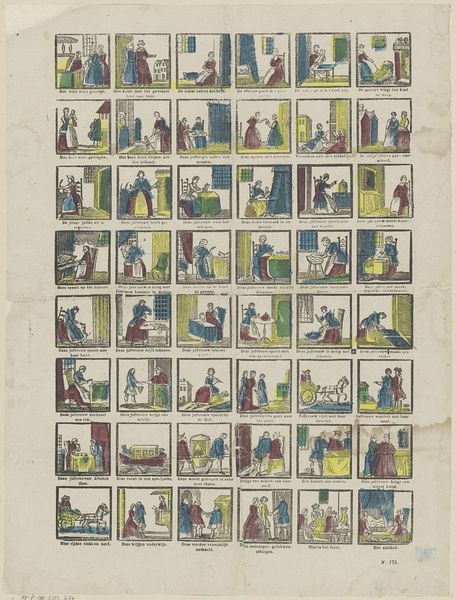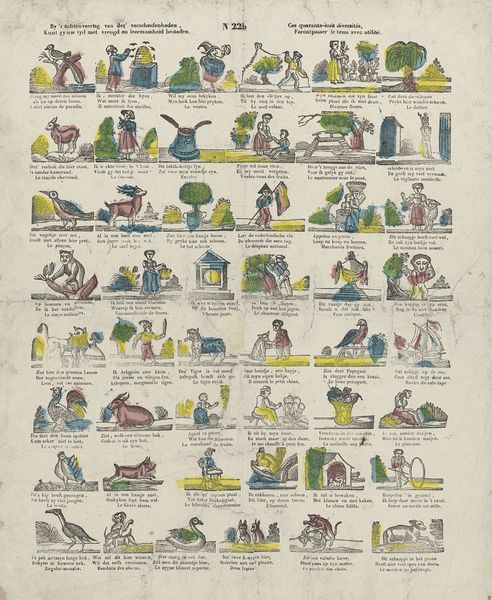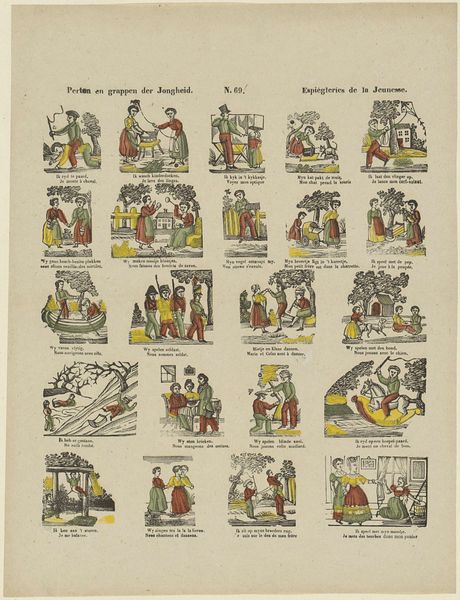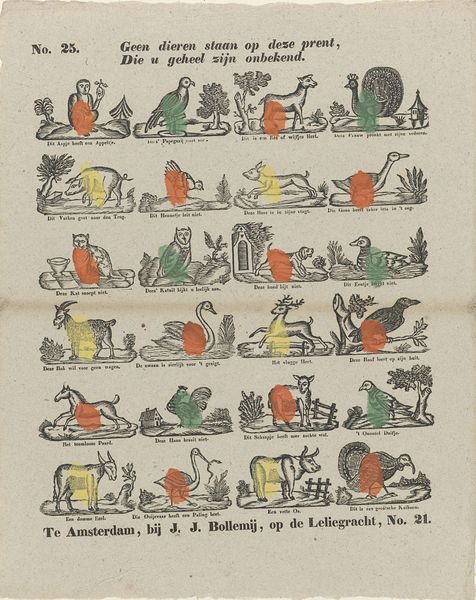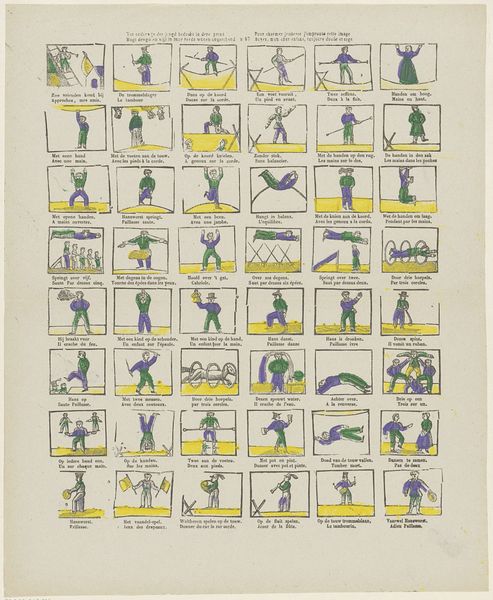
lithograph, print
#
medieval
#
narrative-art
#
dutch-golden-age
#
lithograph
# print
#
genre-painting
#
academic-art
Dimensions: height 434 mm, width 328 mm
Copyright: Rijks Museum: Open Domain
Franciscus Antonius Beersmans created this print, Verschillende voorstellingen, in the late 19th century. It's a lithograph, which means it was made by drawing on a flat stone or metal plate with a greasy crayon, then using ink to transfer the image to paper. This process allowed for relatively quick reproduction, making images more accessible to a wider audience. Here, the lithographic process enabled the mass production of educational materials. The scenes depicted – animals, people, and everyday activities – suggest this was intended as a teaching aid, perhaps for children learning to read. The very nature of lithography speaks to the rise of industrial printing and its impact on visual culture. It represents a shift from unique, handcrafted images to mass-produced ones, reflecting broader changes in society driven by industrialization and the growth of consumer culture. Though simple in appearance, this print is thus deeply embedded in its time.
Comments
No comments
Be the first to comment and join the conversation on the ultimate creative platform.
